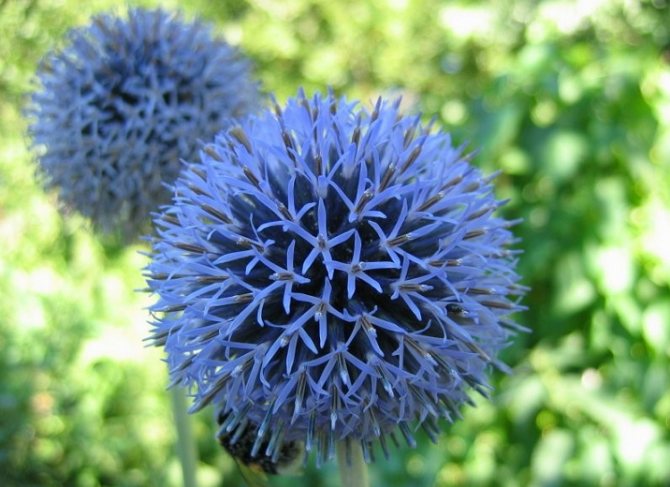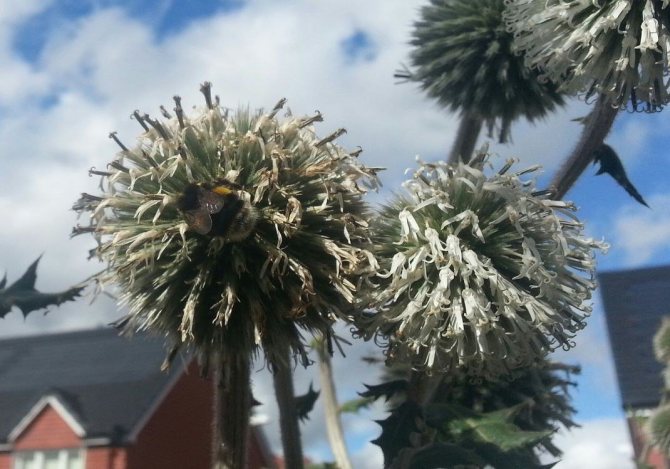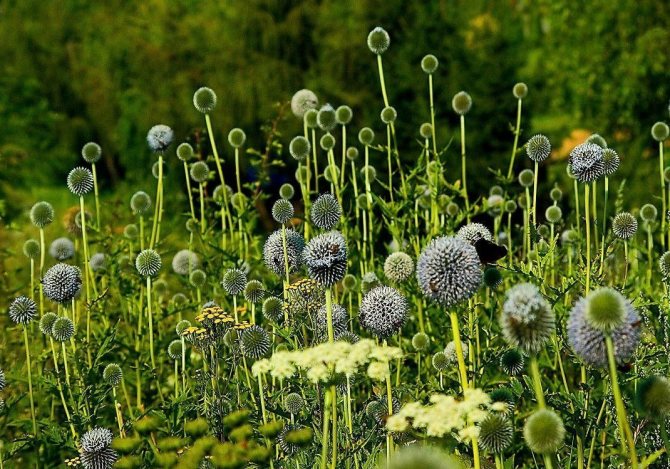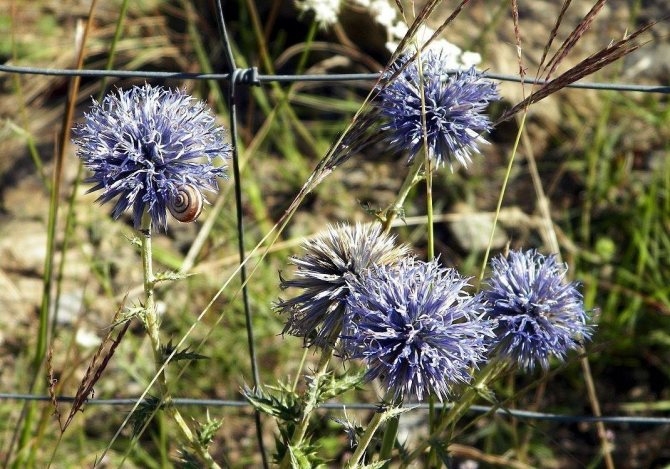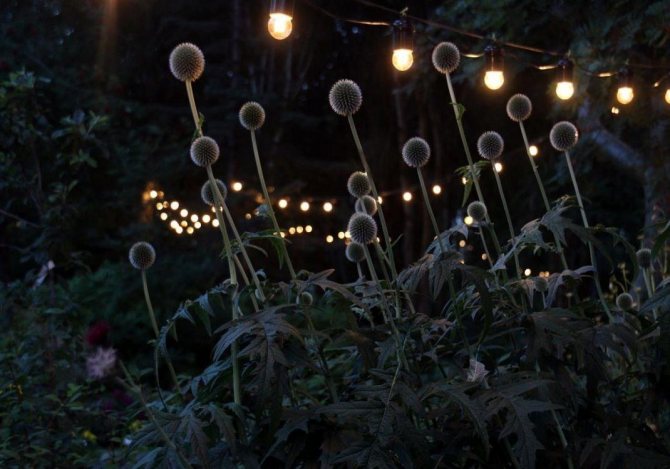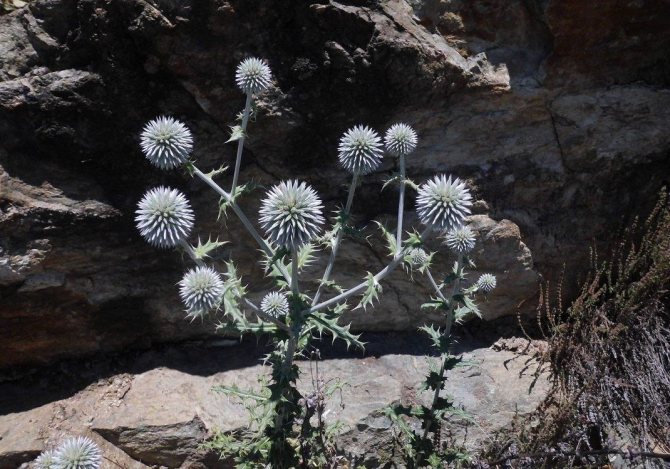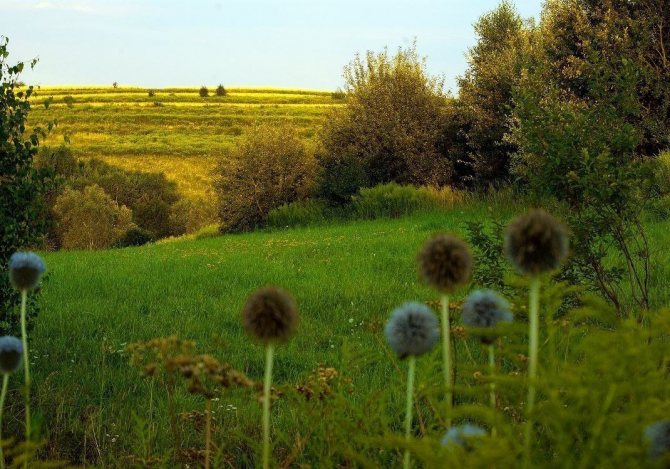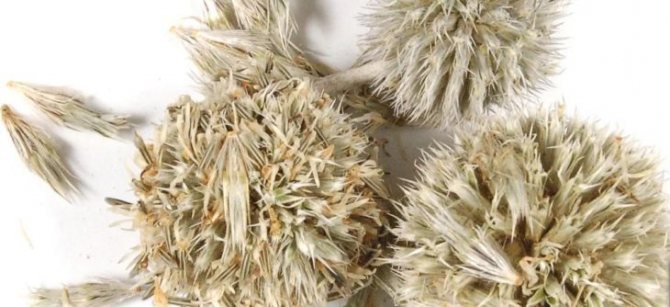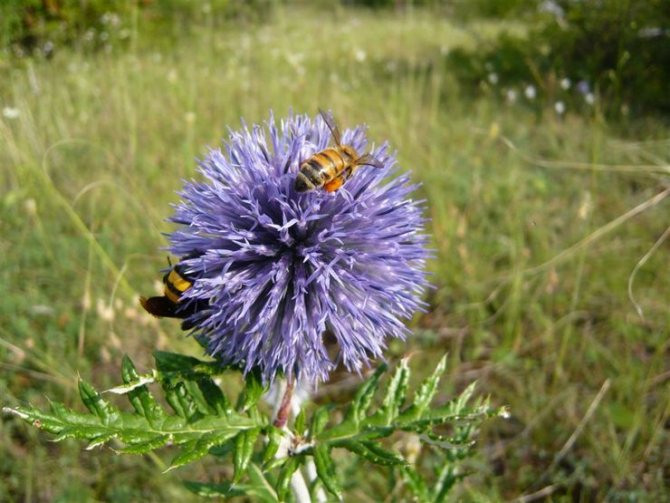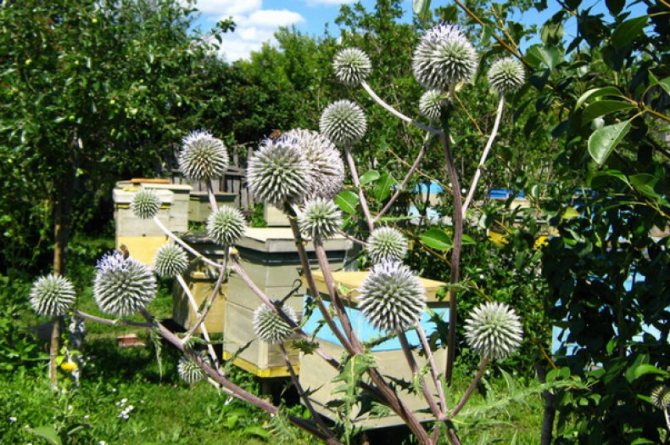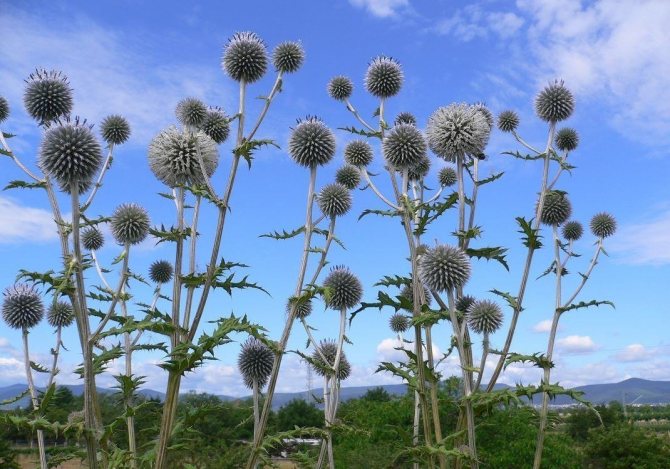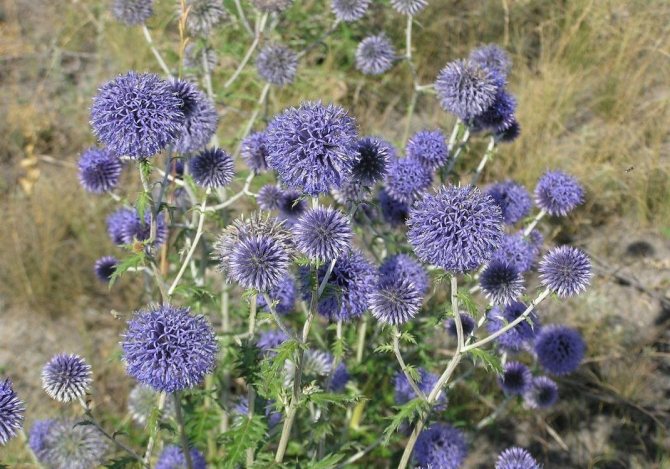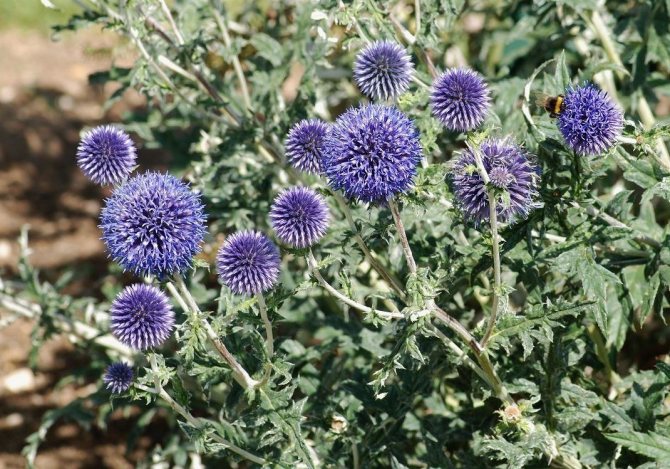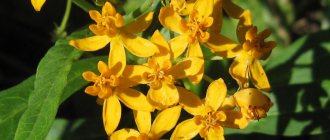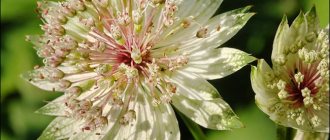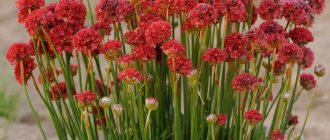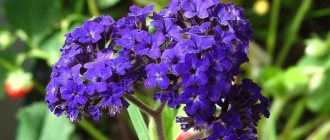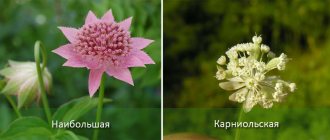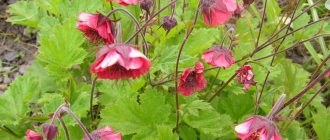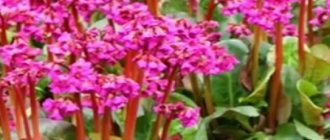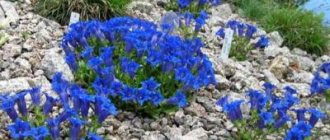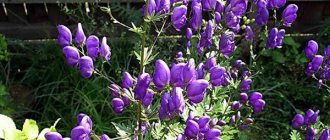Mordovnik is a perennial herb from the Astrov family. It is distinguished by unusual spherical inflorescences. The plant is also known under the names "echinops", "tartar", "erythematous", "shoot". The mordovnik is most widespread in Siberia, the European part of Russia, Western Europe and the Caucasus. Carved foliage and unusual flowers look spectacular in the garden. They attract honey insects and are also used in folk medicine. Learning to take care of a mordovan is not difficult. In gratitude, he will present with lush vegetation.
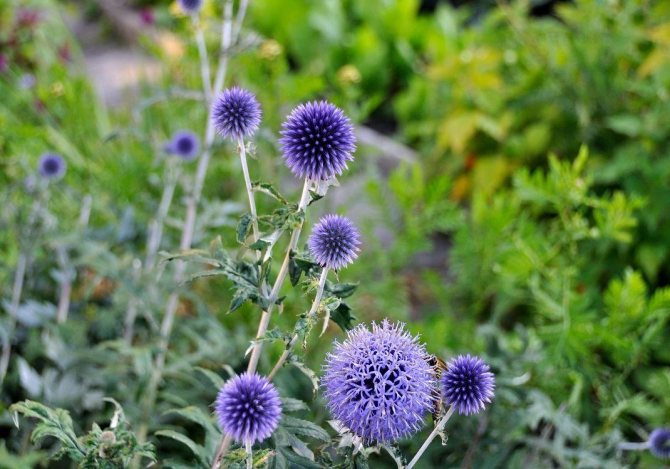
Botanical description
Ball-headed mordovnik is a plant of the Astrov family. It is a perennial plant, distributed in the steppe regions of Ukraine, in the Caucasus, South-West Siberia, in Central Asia.
It is a tall, up to 2 m, herbaceous plant with a straight stem branching towards the top. The root is massive, pivotal. Leaves are elongated, prickly, pinnately dissected.
The upper part of the leaf is dark green, fleecy, the lower part is whitish, fluffy-rough. The flowers are blue-white, up to blue, collected in inflorescences in the form of thorny balls, up to 5 cm in diameter.
Up to 350 flowers are collected in the inflorescence, and up to 30 inflorescences grow on the stem. The fruit is an oblong, highly elongated achene up to 8 mm, covered with hairs. The seeds are combined into dense balls-inflorescences.
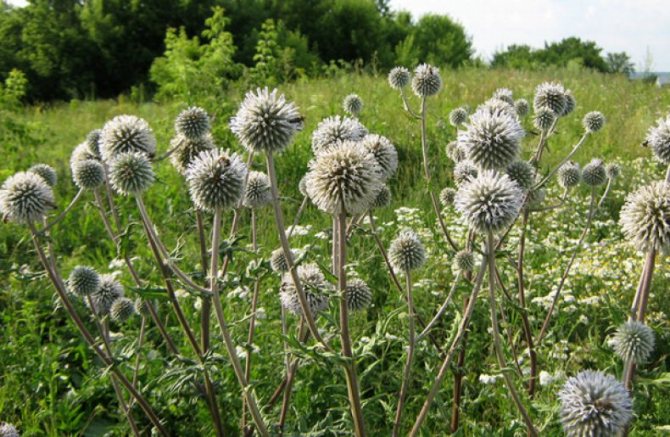

Prohibitions, possible side effects after using the herb
Mordovnik is an herb containing poisonous elements, so you need to use home remedies carefully, carefully studying the contraindications. It is strictly forbidden to take even weakly saturated home medicines during pregnancy - there is a risk of seriously harming the baby. For the same reason, it is not recommended to use decoctions for women who are breastfeeding.
It is forbidden to use home formulations for the treatment of children, people suffering from high blood pressure, bronchial asthma, nephritis. Hepatitis, lesions of the optic nerve, diabetes mellitus - a number of other prohibitions on the use of decoctions, tinctures.
Improper use of herbal remedies, neglect of contraindications, a tendency to allergic reactions will result in complications - instead of treatment, it is easy to cause serious harm to the body.
Side effects include increased blood pressure, muscle cramps (especially in the elderly), dysfunction of the nervous system, and severe headaches. If one of the warning signs appears, stop taking it immediately and see a doctor.
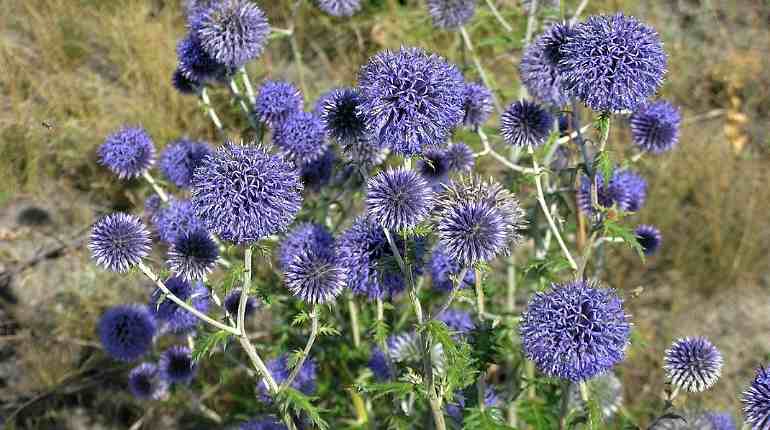

Mordovnik is an herb that can easily cope with serious diseases and no less easily cause serious harm. In order to completely eliminate unpleasant complications, it is recommended to strictly follow the requirements of alternative medicine, follow the recipe, and study contraindications. Only the correct use of plant materials will allow you to achieve positive results and quickly cope with the disease.
Honey-bearing properties
By the timing of its flowering, mordovnik is a honey plant in the second half of summer. The nectar in the flower is very abundant, it is generated by nectaries in the depths of the flower and comes out through the conical opening of the corolla.
It happens that nectar covers the entire inflorescence.In drought, nectar content does not stop, although it decreases to half, and at normal humidity and temperatures above 25 ° C, some flowers have up to 6 mg.
The plant's nectar is colorless, transparent with a slightly spicy, pleasant aroma. The sugar content in nectar reaches 70%. A large inflorescence allows several bees to feed from it at the same time and its attendance can reach up to 180 per hour.
The final honey productivity of the ball-headed mordovnik is extremely high, depending on the external conditions, it can be from 0.6 to 1.2 tons of honey per hectare.
Honey turns out to be transparent, light, yellow or amber-colored. It has a great taste and delicate floral aroma with a touch of spice.
Mordovnik for headaches
Fresh greens of the plant are an effective remedy for headaches, migraines. You do not have to prepare homemade medicine - only fresh leaves, shoots, ground into a fine gruel, are used.


Wrap the resulting mass in gauze, put on the forehead, leave for a quarter of an hour. The headache usually disappears quickly. If the painful sensations have not completely disappeared, repeat the procedure after a while.
With pain in the temples, you will have to use tartar juice. Rub the liquid squeezed out of the grass mass with light movements in the area of \ u200b \ u200bthe temples. Wait half an hour, repeat the procedure.
Where to plant a scrubber?
Ball-headed mordovnik is an undemanding plant both in terms of soil and planting site, and in terms of agricultural technology in general. Almost any soil is perfect for him, with the exception of swampy, wet areas, where there is a threat of root rot.
It can be planted in any uncultivated areas near the apiary, on the slopes of ravines, among bushes, in meadows, forest glades and other inconveniences.
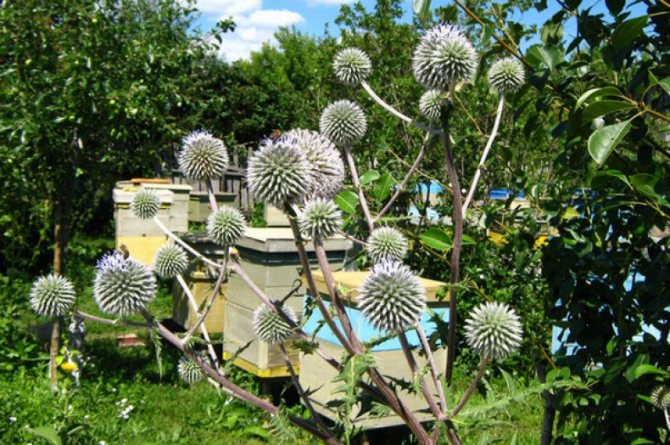

To achieve a higher honey content, it is advisable to choose calcareous chernozem or well-fertilized clay soils. Fallow or fallow fields after potatoes, corn or wheat are perfect, but you need to remember that the muzzle is a perennial plant.
Elimination of hair problems - profuse hair loss, lack of growth, dandruff
With intense hair loss, poor growth, seborrhea, loss of a healthy shade by strands, you can also not do without a scrubber. Herbal raw materials are replete with substances useful for hair that can eliminate all problems.
After several weeks of regular use, the loss will decrease, a healthy shine will return, the work of the sebaceous glands will normalize, and dandruff will disappear. Preparation:
- Combine the roots of the muzzle, sage leaves, string, eucalyptus (you need 20 grams of the mixture).
- Bring water (500 ml) to a boil, steam, stirring, the herbal mass.
- Wait half an hour, drain.
Use the product to rinse your hair after each shampooing. In case of significant problems, a more serious impact will be needed - to complete the procedure with prolonged massaging of the dermis. Stroking, rubbing the scalp will allow the active ingredients to penetrate deep into the tissues of the epidermis.


Growing rules from seeds
Mordovnik is grown from seeds, it is easiest to collect them yourself. The collection is carried out in the second half of August and in September. Mature seeds can be distinguished by the fact that after separation from the stem, their inflorescence crumbles into individual achenes.
If it was not immediately possible to collect the required amount, then first the mother plot is planted, and then seeds are already collected on it for mass sowing.
Sowing
Ball-headed mordovnik is a resistant plant, cultivation from seeds is usually carried out in spring, when the soil surface warms up to 12 ° C, although it can be planted for the winter, then autumn and winter precipitation will cover the seeds and provide the necessary conditions for germination.
Seeds are sown in dug or plowed land.In small areas, grooves or nests are made 15-25 cm apart, the seeds are sown mixed with sawdust and covered with earth.
For large areas, they are sown in two rows, 30-75 cm of arcs from each other, using a cultivator, and then rolled. Since the seeds are covered with hairs and adhere to each other, sowing is easier by hand. When sowing, it is recommended to apply fertilizers such as superphosphate, 50 kg / ha.


The germination rate of this honey plant is high, so even a simple scattering of seeds will bring results.
Sowing care
Like planting, caring for the muzzle is simple. The moisture content of the soil should be medium, stagnant water should be avoided. After the plants are fully grown, it is thinned out, and transplanted where necessary. Row spacings can be cultivated to a depth of about 7 cm and weeds can be weeded.
Treatment of a stroke with a decoction of seeds
In case of a stroke, traditional medicine offers to undergo a long course of treatment with a decoction of muzzle, prepared on the basis of seeds. The tool normalizes heart function, increases elasticity, vascular strength.


It is also recommended to take herbal medicine for prophylactic purposes - the active ingredients will reduce the risk of developing serious diseases. Step-by-step folk recipe:
- Place the seeds of the plant (10 gr.) In a metal saucepan.
- Pour boiling water over the plant materials (300 ml).
- Put on the stove, boil under a lid over low heat for a quarter of an hour.
- Remove from heat, leave to cool slightly, drain.
Drink home medicine four times a day, to increase the effect, observe equal time breaks between doses. The dosage is 25-30 ml. As a preventive measure, it is recommended to reduce the number of doses - to use home medicine only twice a day, before going to bed, after waking up.
The duration of treatment is individual. Everything depends on additional complications, the stage of the disease, the general condition of the body. The only caveat is not to carry out alternative treatment for more than a month, you need to take breaks to allow the body to rest.
Care features
The ball-headed mordovnik is a perennial, unpretentious plant that is resistant to drought and cold, and this determines its care. In the first year, care is limited to periodic weeding.
In the spring of the second year, it is necessary to loosen the aisles to a depth of 10 cm.After ripening and harvesting the seeds, before the third and subsequent years, the plants are cut at a height of 5 cm.
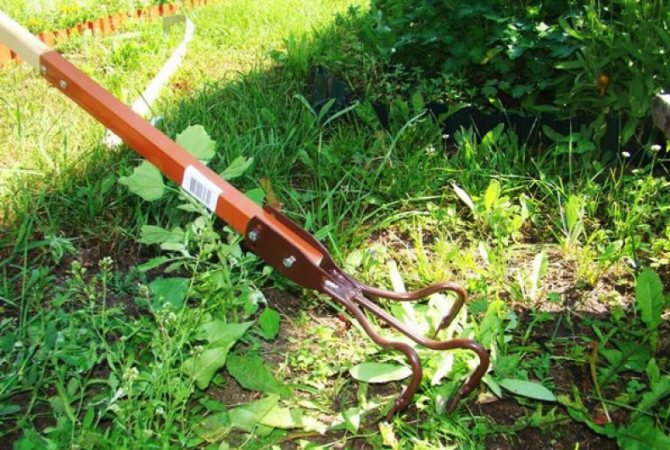

When grown on poor, clayey soils, in the second and subsequent years, nitrogenous fertilizers can be applied in the spring.
Herbal Facial Lotion
Due to its anti-inflammatory qualities, the mouthpiece is often used in home cosmetology. The lotion saturated with vitamins effectively copes with acne, acne, inflammation, saturates the dermis with useful elements, evens out the shade.


To prepare a homemade lotion, mix the herb of tartar, St. John's wort, yarrow, add chamomile, linden flowers (take the components equally - 5-10 grams each). Boil water (300 ml), steam the vegetable mass. Put on a steam bath, simmer for 7-10 minutes. Remove, insist until completely cooled. Strain, store no more than two days in the refrigerator.
Wipe the affected skin of the face several times a day. If you are worried about large purulent acne, an abundant rash, it is recommended to do lotions on problem areas - soak a soft napkin with a warm agent, leave it on the skin for a quarter of an hour. Do not rinse the dermis after the procedure.
Healing properties
Mordovnik is not only a highly productive honey plant, but also a medicine. The alkaloid echinopsin is obtained from its seeds.
The honey obtained from the muzzle, tinctures and decoctions help with headaches, epilepsy, multiple sclerosis, paralysis, paresis, radiculitis, with the restoration of motor functions associated with the central nervous system and PNS.It is useful for heart disease, heart attack, restores the elasticity of the walls of blood vessels, and normalizes blood pressure.
It is easy to care for and grow, is not afraid of drought and cold weather, and has valuable medicinal properties. High quality oil is obtained from its seeds. The formed plantation will bear fruit for up to 15 years.
First-year plants serve as an excellent, highly productive livestock feed, especially when sown together with annual plants. In addition to all this, it also has a decorative value, looking great on alpine hills and in shrub groups on lawns.
S. Vinogradov, Krasnoyarsk region, Dzerzhinsky district
Dear editorial office of the newspaper "Apiary of Russia"! Thank you very much for your attention to my articles on honey plants! And I have about 20 types of them. All these honey plants are good, each in its own time! Among them, I would like to highlight a very interesting plant, a honey plant and a healer, the cultivation of which has some peculiarities. I think my experience will be useful to beekeepers. I wish the newspaper success and prosperity!
I have been growing this wonderful plant for the seventh year. And every summer I see a lot of wasps, bumblebees, wild and honey bees on the flowers of the muzzle. And it is not surprising that the hand is sticky - this plant produces so much nectar. Honey productivity is 350-1000 kg per hectare (almost like linden). There are many types of mordovnik: broadleaf, Daurian, Russian low and others. Perennial and biennial species. The one that grows with me is a biennial. Winter-hardy species in Siberia. It is unpretentious in cultivation. I have not yet noticed any diseases and pests on this plant. Late summer honey plant - begins to bloom in the 20th of July and blooms for about a month.
Read also: How long does it take to smoke hot smoked fish
The main mass flowering occurs in August, when the main summer honey plants (the main honey collection), such as sainfoin, motherwort, bruise, and sweet clover, have already faded. This promotes the growth of young bees in the winter. During flowering, it emits a subtle, peculiar, somewhat similar to perfume, aroma. On one plant there are up to 20 or more flowering heads of different times - inflorescences, white and light blue, with a diameter of 3 to 5 centimeters. At this time, it is very decorative! On separate flowering heads 3-5 insects working simultaneously are observed, and there is a place for everyone. There is a hum over the field, from many flying wasps, bumblebees, wild and honey bees. They actually dig into the flowers, picking up nectar. The picture is pleasant for the beekeeper, but very useful for the bees at this time of the year.
The mordovnik blooms from the second year, and in the first year it forms only a rosette of basal leaves and actively builds up the root system, which is typical for all biennials. It is not picky about soils, but on fertile soils it grows up to two meters. On poor, turfed and dense clayey - undersized. It is very drought-resistant and photophilous. In very shaded places, the rosettes develop poorly during the first year of growth, and the plant blooms only in the third year. It grows well on southern slopes, where it is preferable to set aside areas for seed purposes. It liberates abundantly nectar both on cloudy, cool and sunny, hot days.
The seeds of the cormorant begin to ripen around the first decade of September (during dry and hot summers and on the southern slopes). But, if the summer was damp and cool, then this process can drag on until mid-October. A sign of complete seed ripening is the appearance of "bald spots" on the tops of the heads. The seeds begin to separate when they are lightly pinched. It is impossible to delay cleaning after that, because they can easily crumble from the wind. After the seeds ripen, I cut off the heads, putting on thick leather gloves on my hands, with pruning shears and spread them out to dry under a canopy in a layer of 10-15 cm.
Then I grind the heads and stuff them in bags. Dry scrub seeds give off a lot of stinging dust - it feels like working with glass wool. The seeds of the muzzle have medicinal properties and are used for such diseases as paresis, plexitis, sciatica, hypotension and hypertension, radiation, muscular atrophy and optic nerve atrophy, etc. in the form of aqueous and alcoholic tinctures. But you need to follow a very precise dosage and recommendations of phytotherapists, because muzzle seeds contain nitric acid salt.
Next, I'll tell you about how I grow this plant. It is necessary to sow mordovnik in the autumn, that is, before winter. But choose the sowing time so that the seeds do not germinate, otherwise the seedlings will not have time to get stronger and develop before winter and will die. In my area, this is approximately the second or third decade of October, when the earth will cool down. I sow in the following way. I make furrows or holes with the angle of a hoe, hoe, and in large areas - with a tractor-inter-row cultivator. I spread the seeds in 3-5 pieces. in one place (holes or furrows) every 50–70 cm, depending on soil fertility. Then I compact the bottom of the furrow (or hole) together with the seeds with the end of the board, or press it with my foot. After that I fall asleep with earth, a layer of 1-3 cm, showering it from the walls of the grooves-holes with a hoe or a rake. Recently, having a large number of seeds from their seed plots, the practice of sowing randomly followed by incorporation with harrows. In the first or second month after sowing, it is advisable to weed or cut down rapidly growing weeds. Regardless of whether there are seedlings or not, if the crops of the muzzle were in a pure form, without a cover of other melliferous plants. In this case, the plants of the first year develop better and faster than under the canopy of weeds. Severely oppressed in the first year and late emerged plants bloom only in the third year from sowing. Although it should be noted that the shoots of the mordovnik are very resistant to competitors, they only need to catch their roots to the ground. And in the second year, they successfully resist and oppress close-growing neighbors, gaining a place in the sun, because the root system of the muzzle is already well formed. That is why the mordovnik can still grow, being sown for inconvenience and on waste lands. Only for this it is necessary to comply with the following conditions:
1) Avoid heavily turfed and dense soils, as there every centimeter of soil is "caught" by the root system of perennial grasses and weeds, and therefore the topsoil is dried up. Such lands must be plowed;
2) before sowing, remove the old stems of plants (weeds) with a scythe, rake, and on large areas with a double harrow or a heavy bar, stretching them several times across the field with a tractor so that plant residues do not interfere with sowing and do not shade seedlings in spring;
3) sowing must be done before winter (October). In this case, the seeds are saturated with moisture from thawed waters and go through a natural natural path of stratification, and with the onset of the first heat, as soon as the topsoil warms up, they germinate faster and, making the most of the spring moisture for growth, become stronger and more resistant to competitors. And in subsequent years, after abundant self-sowing, they dominate among other plants - neighbors in the field. Overwintered rosettes in the second year start to grow early - one of the first among spring plants. And this is another advantage of the mordovnik over such widespread weeds as the squid, sow thistle, wormwood, quinoa, and spurge. For germination, a soil temperature of 8–10 ° C is required. Their growth begins at the end of May, and the muzzle has already blossomed in the outlet and is preparing for the release of generative shoots with peduncles. On clay soils, it is advisable to loosen the plants of the second year in the aisles (with wide-row sowing). With solid crops (in pure form or together with other honey plants), treat with harrowing in order to increase air access to the roots of the rosettes, which improves their growth and development of generative shoots with peduncles.
The seeds of the ball-headed mordovia belong to the category of tug-like, which is typical for many wild plants. Having covered the soil with seeds once, the seedlings germinate slowly and not every year. Consequently, this process can drag on for years.The initial germination of the seeds of the cormorant is from 10 to 30%, depending on the method and time of sowing, the heat and moisture of the soil, the degree of maturity of the seeds. So Mother Nature ordered, raising them in harsh conditions. Only in a person who has grown a cultivated plant in a hall and bliss does it emerge in the first year and by almost 99%, although it dies in the event of adverse events (rainfall, hail, storms, frosts, etc.). Wild plants have their own insurance in this case. Therefore, do not be surprised if, in the first year of sowing, the shoots of the muzzle will be very rare, or maybe they will not be at all - in the case of sowing in spring, and, especially, with early summer sowing. The sown seeds will germinate in the 2nd, 3rd, 4th years from the initial sowing. But this phenomenon of the first years, so it was with me at the beginning, when I saw a sprouting mordovnik only in the 2nd year, and even better germination and growth - in the third year from sowing. I believe that because of this phenomenon, as well as the tendency to abundant self-sowing, the ball-headed mordovnik is mistaken by many sowers for a perennial, but this is not so.
Read also: French trotter horse breed
This species is a typical biennial. In the first year, it forms only a basal rosette of leaves, and the next - generative shoots with peduncles. In the third year, it resumes by self-seeding and does not grow back from the roots. Taking into account the tightness of the seeds of the mordovnik, sowing should be carried out in conjunction with other melliferous plants in order to avoid thinning of seedlings in the first year of sowing. Sow under cover of annuals (buckwheat, phacelia, rapeseed, mustard), with a reduced seeding rate. In two steps. First, the mordovnik, and then an annual crop with a small fraction of seeds, or, as an option: buckwheat and mordovnik, together in one step with a seeder (or randomly), because they have approximately the same seed fraction. Or, in my opinion, a more successful option is a mixture of perennial types of melliferous plants, such as sverbiga orientalis and sainfoin - with a seeder or randomly. And be sure to fall, because sverbyga and, to some extent, sainfoin need, like mordovnik, stratification, which they pass in a natural way, being sown before winter.
In addition, these perennials can resist the “aggression” of the mordovnik in subsequent years, combining successful flowering - almost in two months (20.06 - 20.08), as early summer + late summer. It should be noted that it is difficult to sow the mordovnik in its pure form, because its seeds have a shaggy shell and do not go well into the seed tubes of the seed drills. A mixture of seeds with other seeds of more or less equal size facilitates this process. You can do with the old-fashioned method - manual scattering. True, the consumption of seeds will be very high, but the sprouting of seedlings is less.
Along with the mordovnik, I want to highlight the following honey plants as promising for beekeeping: borage (borage), motherwort ordinary and hybrid, catnip, phacelia, hyssop. These melliferous plants are very actively visited by bees during the day, but they require fertile and moderately moist soils with a light texture. It is possible to provide such a background of soils with the help of annual honey plants, which are not particularly demanding on soils, such as: spring rape and white mustard. Plowing them every year after flowering as a green manure. By creating a honey conveyor, we provide a rich and varied “menu on the table” for bees as a guarantee of good, stable honey harvests and, accordingly, the health and quality of bee colonies! And much more, which I have already written about (in No. 7, 2009).
In conclusion. I ask beekeepers from the southern regions of Russia to respond, where the seeds of the annual white sweet clover are grown and harvested. Wonderful late summer melliferous plant, tested by me in Siberia. It blooms from the twenties of August and throughout September, until the first severe frosts, but, unfortunately, because of the short Siberian summer, it does not have time to ripen into seeds.
If you have any questions, please write. For everyone who wants to grow a ball-headed mordovan, I will send some seeds for testing (free of charge), from you - a self-addressed envelope and an enclosed bag, 5 x 5 cm.
Curious notes about the Mordovnik plant


Since the barnyard is an excellent honey plant (nectar can fill the entire inflorescence), then plant it next to the apiaries, while the resulting honey pleases the eye with its rich amber color and refined aroma. The taste of this product is also excellent. When honey undergoes crystallization, it acquires a fine-grained structure and a white color.
It is noteworthy that each inflorescence of the Adam's head contains about 20 grams of sugars. If there are Echinops plantings near the apiary, then from 1 hectare, bees collect up to one ton of honey. For this, a variety of ball-headed mordovia is usually planted. Other varieties are also distinguished by their melliferous properties, but not so high - from the same area, you can get an average of up to half a tone or a little less honey.
Important!
Every year the amount of nectar in the mordovan grows, and it can be released in any weather.
Since the fruits of the steep contain the alkaloid echminopsin, the plant has long been used by traditional healers to tone the body (heart, vascular system). Achenes help to excite the central nervous system and increase blood pressure. If a person feels fatigue, then barnyard was used to eliminate it, relieve headaches and restore both sleep and appetite.
The first mentions of the shooting are in the writings of Dioscorides, an ancient Greek botanist, naturalist and doctor who lived in 40-90 AD. e. It is in his work "On Medicinal Substances", which in Latin is called "De materia medica", tells how to use the plant in asthenic syndrome, neurological syndromes (paresis) or peripheral paralysis.
Due to the aforementioned substance "echinopsin", the globular muzzle was used for the production of the medicine of the same name. This substance somewhere in its properties is similar to strychnine, but today this remedy is no longer included in the category of permitted ones, which cannot be said about homeopathy. Here, seeds and fruits of black sedge are used and tinctures and decoctions are made on their basis. Chinese healers use a variety of Daurian mordovia to stop bleeding and treat inflammation.
Important!
In the field of toxicology, Mordovnik has not yet been studied sufficiently. Also, one should not forget that any treatment should take place under the supervision of a doctor and it is not recommended to exceed the dosage, since it is possible to cause severe poisoning. Signs of an overdose with means based on the Adam's head plant are muscle spasms and respiratory failure.
There are also contraindications to the use of drugs from Echinops, namely:
- period of pregnancy;
- asthma and allergies.
Because of its spherical inflorescences, steep is used as an ornamental plant, drying the shoots and inflorescences of which are dried-flower bouquets. Due to the large amount of oil in the barberry fruits, a rather fatty oil product is obtained, which is further suitable for the production of drying oil.
There are peoples on the planet on whose territory this representative of the flora grows, who use it for food, like artichokes.
Description of the plant
A herbaceous plant Ball-headed Mordovnik is a representative of the Astrov family, distributed in Western Europe, the North Caucasian District, in the South, the European part of the Russian Federation, found in Siberia and the Urals. The plant blooms in early July. Perennial Mordovnik ball-headed belongs to medicinal plants, cultivated as a honey plant. In pharmacology, it is the basis of the drug "Echinopsin". It is used in traditional medicine.
External description of the plant:
- Mordovnik grows up to 2 m in height.
- The stem is long, thin, branched upwards. Trichomes of a brown shade, resembling a pile, are formed along the entire length.
- The leaves of Mordovnik ball-headed are pinnately dissected with formations along the edge in the form of small thorns. The plate is elongated (up to 20 cm), up to 8 cm wide, the surface is rough, the edges are carved. The color of the upper part is deep green, the lower part of the leaf plate is light gray. The leaves grow along the entire stem in the form of a spiral, at the base the diameter is larger, towards the top it decreases, at the end point of growth the leaves are small in size.
- Flowers are located on the main axis, collected in a spherical, prickly inflorescence up to 400 pieces. Up to 35 inflorescences with a diameter of up to 6 cm are formed on the stem. Depending on the type, the flowers are white, light blue or blue.
- Fruits in the form of cylindrical achenes with a cupped tuft.
- The root system is pivotal, in-depth.
Ball-headed Mordovnik bears fruit for 2 years of vegetation, the first season the plant forms a basket of long leaves, the diameter of which is about 65 cm. Flowering begins in July and lasts until mid-August. The culture belongs to the second wave of honey plants that bloom after the May and June honey plants. The flowers of Mordovnik ball-headed are available to bees all daylight hours, they close in the complete absence of lighting.
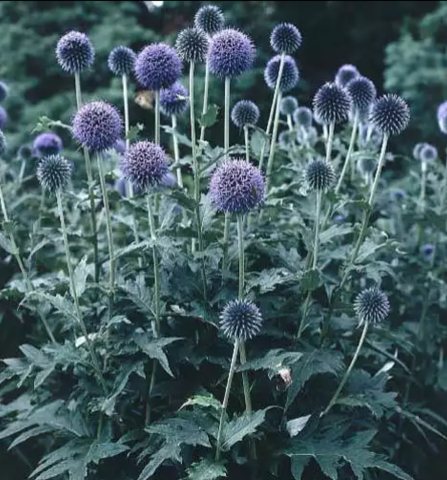

What types are there
Mordovnik has more than 180 species. Most of it grows like weeds on roadsides, wastelands, forest edges, in the steppe. Mordovnik is grown in three varieties.
Read also: Bordeaux strawberry liquid in autumn
In addition to the ball-headed one, the common Mordovnik is cultivated. This compact honey plant does not extend upwards more than 65 cm. The central stem and the underside of the leaf plate are covered with glandular trichomes. The color of the leaves is bright green, the same throughout the leaf, 15 cm long.It blooms at the end of summer with white, blue-tinted inflorescences, 2.5 cm in diameter.
The height of the broad-leaved mordovnik is about 80 cm. The stem is hard, thick, covered with silvery trichomes, looks white against the background of foliage. Leaves are up to 25 cm long, 10 cm wide, green in color. Along the edge there are wide teeth ending in spines. It blooms with blue or purple flowers.
Benefits of growing as a honey plant
The cultivation of the Mordovnik plant as a honey plant does not require special agricultural techniques. The culture tolerates changes in night and daytime air temperature well, the vegetation is not affected by the proximity of weeds. After sowing, the ball-headed Mordovnik needs only one top dressing. The plant is drought-resistant, it can do without watering for a long time, but for greater productivity in the first year of growth, the plant needs moderate watering. Then the root system goes deep into the soil, soil moistening becomes irrelevant.
The advantage of the ball-headed mordovnik is the secretion of nectar during the entire illuminated time, regardless of the weather. The honey plant blooms relatively late and is the main supplier of nectar. Duration of flowering is about 45 days. The spring harvest is mainly used for feeding children, and at the end of summer there is a mass harvesting of honey for the winter, so planting a plant is economically justified. Ball-headed mordovia grows in one place for 10 years, independently scattering seeds and filling empty spaces.
The plant is aesthetically pleasing, looks harmoniously with flower crops on the site, complements the landscape design. It is a favorite among honey plants. Possesses medicinal properties, the fruits consist of active substances that are widely used in alternative medicine and pharmacology.
Agricultural applications
Ball-headed mordovnik is cultivated as a fodder for livestock. Cutting is carried out 3 times during the summer-autumn season.The first two go for fodder, the last one is laid in silo pits. For the winter period, farmers provide animals with a feed additive with a large amount of useful microelements.
Tincture for hemorrhoids
Simultaneously with the use of external drugs prescribed by a doctor, alternative medicine advises using a tincture at home that increases the effect of medication.
The tool effectively eliminates all symptoms of the disease - relieves painful discomfort, eliminates itching, burning, reduces the size of hemorrhoids, and stops the spread of inflammatory processes. Preparation:
- Chop the rhizome of the plant (50 gr.), Send to a glass container.
- Pour homemade pervach, vodka (300 ml).
- Close the bottle, shake it several times.
- Insist for two weeks, filter, pour into a clean container.
Take 15-20 ml of home remedy daily. It is recommended to use it twice - in the morning (before breakfast), in the evening. It is allowed to dilute the product with water, especially with increased sensitivity of the body.
Treatment should be carried out for at least a month. If necessary, drink another course, taking a break (3-5 days).
Honey productivity
The main factor for breeding a culture is honey productivity. In Russia, only linden can compete with Mordovnik in the yield of nectar during the period of active flowering. Each inflorescence of Mordovnik ball-headed contains about 70% of polysaccharide and disaccharide compounds.
The inflorescence is large, round shape allows several bees to settle on it. Up to 170 individuals can visit the plant per hour. The nectar is constantly being produced. The productivity of Mordovnik ball-headed under favorable climatic conditions is from 0.5 to 0.9 tons of honey per 1 hectare. Low-growing varieties yield 350 kg from the same area. In very dry summers, productivity drops by 35%.
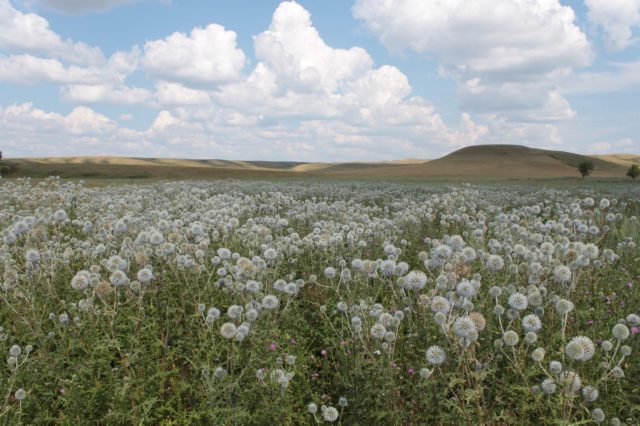

Using
Powerful foliage and beautiful screech blossoms can decorate any part of the garden. In nature, there is not so much pure blue and light blue, so you should not give up the unpretentious mordovan. Fragrant flowers attract many beneficial insects to the site.
Tall thorny shoots are placed in the central part or in the background of the flower bed. In addition to this, lower flowering plants can be planted. Mordovnik goes well with monarda, centranthus, poppies, lavender, flax, catnip and chamomiles.


Beautiful blue inflorescences are used for decorating bouquets, as well as for drawing up dry compositions. Mordovnik retains its shape well and rich colors.
Growing Mordovnik as a honey plant
Mordovnik ball-headed is planted in large areas with seeds. On a personal plot, you can propagate a honey plant by dividing an adult 2-year-old bush. The works are carried out in the spring. This method is laborious, the root system of Mordovnik is pivotal, in-depth. There are pluses in this breeding method: by the end of summer, the culture will bloom.
What soils does the honey plant grow on?
Ball-headed Mordovnik grows everywhere, it can be planted in untreated plots, the main condition is a sufficient amount of ultraviolet radiation. In the shade, the vegetation slows down. Soils for planting are chosen from neutral black earth, or clay, fertilized with organic matter. The best option is fields after wheat or corn. Swampy areas with close groundwater are not suitable, the root system rots under such conditions, the honey plant may die.
Sowing terms and rules
Seeds of Mordovnik ball-headed can be collected independently or purchased. Sowing is carried out in open ground in the fall from mid-September to the end of October. Spring sowing is rarely resorted to, since the culture grows more slowly.
- The seeds are mixed with sawdust.
- Depressions (2.5 cm) are made in the form of grooves.
- Scatter the prepared mixture.
- Fall asleep with soil.
- The distance between the rows is at least 65 cm.
In a temperate climate, a honey plant Mordovnik ball-headed seedling is planted in a small area. Seed laying works are carried out in early March in containers with peat. After two weeks, the culture will give young shoots. They are planted on the site in early May.
Care rules
The honey plant Mordovnik ball-headed does not require practically any agricultural technology. In the first spring after planting, it is recommended to feed the crop with nitrate or nitrogen-containing fertilizers. For normal growth, one top dressing is enough; in subsequent years, fertilizers are not applied. After the complete formation of the root system, the plant shows good drought tolerance. The first year, a honey plant in a hot summer without rain requires moderate watering, waterlogging of the soil should not be allowed.
Which type to give preference
For agricultural purposes, broadleaf Mordovnik is planted. In the first year of growth, it forms a powerful rosette of long leaves. The spines at the end of the leaf plate are formed in the form of rudiments. After cutting, the plant quickly recovers; by autumn, before harvesting silage, it reaches a height of 20 cm.
Mordovnik ordinary - a weed that grows in the wild. It is used mainly for the design of the territory. The nectar collected from this variety is part of the herb honey.
For commercial production of honey, preference is given to the ball-headed Mordovnik. This is the most productive type of culture. The inflorescences are large, the thorns that form in the first year of growth protect the honey plant from damage by herbivorous domestic animals.
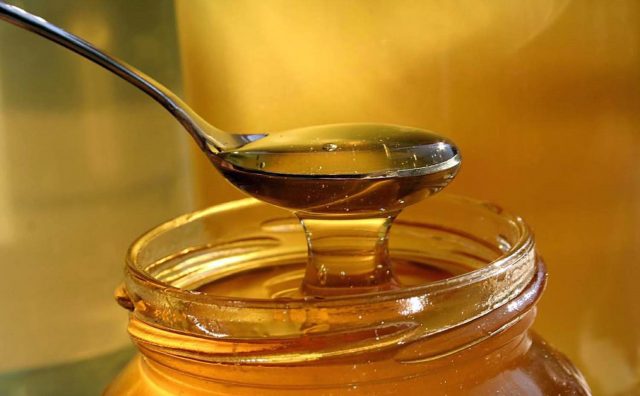

Decoction of leaves to stabilize pressure


A decoction made from the leaves of a plant is recommended for hypotensive patients. The plant contains elements that increase pressure, have a beneficial effect on blood vessels (strengthen the walls, increase elasticity), and eliminate additional symptoms of the disease. Step by step recipe:
- Chop finely 20-25 gr. fresh leaves of grass (when using dry raw materials, 5 grams is enough).
- Pour in hot liquid (200 ml of water), put on high heat, quickly bring to a boil.
- Reduce heat, simmer at minimum boil for 10 minutes.
- Remove, wait for cooling, add boiled water to the original volume of liquid.
The prepared product should be drunk throughout the day. The dosage for one dose is 25-30 ml. Before going to bed, drinking the broth is not recommended - the raw materials contain substances that have a slight diuretic effect.
Traditional medicine recommends treatment in courses. A month of taking is enough to stabilize the pressure, after two to three weeks the results should be consolidated - drink homemade medicine for another month. Repeat courses every six months.
What properties does mordovnik honey have?
A bee product of light amber color, liquid consistency with a delicate aroma. Does not form crystals for a long time. After crystallization, the color becomes beige with a whitish tint. It has medicinal properties, tinctures are made from it, consumed in its natural form. Mordovian honey is used to treat:
- headache of different localization;
- infectious diseases;
- pathology of the digestive system;
- joint abnormalities, back pain;
- age-related multiple sclerosis;
- cardiovascular disease.
Useful properties of mordovnik, indications for use
The main advantage of the herb is its rich composition. Mordovnik is replete with alkaloids (echinopsein, echinopsin), fatty oils, vitamins, tannins, coumarins, steroids. Among the medicinal qualities are tonic, soothing, anti-inflammatory, cardiotonic, hemostatic.
Most often, decoctions, infusion of scabies are used for a number of diseases, among them:
- joint diseases (paralysis, sciatica, arthritis);
- low pressure;
- inflammatory processes on the skin;
- muscle atrophy;
- inflammation of the trigeminal nerve;
- problems with the genitourinary system;
- disorders of the nervous system;
- eczema;
- purulent non-healing wounds;
- multiple sclerosis;
- frequent headaches;
- heart disease, system.
Saturated decoctions of the muzzle will be of considerable benefit to women who prefer to take care of their hair with home remedies. Rinses, masks will effectively cope with the active work of the sebaceous glands, loss, excised tips, slow growth.
Reproduction
If necessary, there are two ways to breed the mordovnik - by seed reproduction or by dividing the bush. Reproduction is subject to adults, flowering or bearing fruit for 2 or more years.
Dividing the bush
Reproduction by dividing the bush is carried out when it is necessary to get one or two individuals of the Tartar. Reproduction is carried out in the fall, when the bush has faded and the fruits are ripe. The bush is dug out of the soil and freed from excess soil. After this, the rhizome is divided into two or more equal parts. It is important to understand that small parts do not take root well, therefore, when dividing, the size of the remaining bush is taken into account.
The separated parts of the bush are immediately dived and planted in their permanent habitat. Immediately after planting, the muzzle is watered abundantly with water and provided with a regular supply of sunlight.
Seed propagation
The seeds for planting are harvested after the fruit has ripened. Sowing can be carried out both in autumn and spring. Moreover, in both cases, flowering will be only in the second year after planting. Correctly and on time harvested seeds are stored and retain the ability to reproduce for two years after harvest.
Sowing is carried out in a well-ventilated and moisture-absorbing soil. Sowing is carried out in wet soil. After that, the land is leveled and left until germination. After planting in warm climates, the seeds sprout in 7-10 days. For the winter, seedlings are covered with a layer of dry leaves or spruce branches.
In the spring, with the appearance of constant heat, the cover layer is removed, and the plants quickly germinate and gain growth and an abundance of foliage.
When it is forbidden to take a muzzle
It should be taken very carefully as a medicinal raw material. Uncontrolled use of drugs can cause symptoms of intoxication, as well as seizures, nervous disorders and other motor paralysis.
Symptoms of muzzle poisoning are the appearance of nausea, vomiting, dizziness and a feeling of weakness in the body. The person begins to experience headache and muscle pain. If the following clinical situation occurs, you should immediately seek qualified medical attention. Before the arrival of the doctor, they drink a liter of a weak solution of potassium permanganate.
It is forbidden to take medications based on the muzzle in the following cases:
- during the period of gestation or breastfeeding;
- people with high blood pressure or suffering from hypertension;
- with pathologies of the heart and blood vessels;
- in the presence of bronchial asthma;
- with infectious and non-infectious liver diseases - cirrhosis, hepatitis;
- with kidney pathology;
- with malfunctioning of the thyroid gland;
- with uncontrolled seizures.
In addition, it is strictly forbidden to use the mouthpiece as a medicine in children. In the absence of restrictions, before using drugs with a tartar, they receive a doctor's advice on the required dosage and course of administration. You can not take drugs with a muzzle and an unclear allergic history.
How to breed a mordovnik
Before you start to breed a mordovnik on the site, you should familiarize yourself with the features of this culture. This will help create optimal conditions for its growth and development.
Location. When choosing a place for a mordovnik, it should be borne in mind that this culture is photophilous and drought-resistant.It is recommended to plant the plant in open areas, you can plant it even where it will be in direct sunlight. In the shade, the muzzle will develop very slowly, and flowering, most likely, will not come at all.
The soil. Any garden soil is suitable for planting, always with good drainage, since the plant does not tolerate stagnant groundwater. On acidic and heavy clay soils, the flower feels very bad.
Winter hardiness. High winter hardiness, the plant easily tolerates low temperatures up to -40 degrees. In preparation for the winter period, the shoots are completely cut off from the muzzle. Shelter is not required for him.
Watering. The flower does not need frequent and abundant watering, since its root goes deep into the soil. It is enough to water in extreme heat and prolonged drought.
Top dressing. Top dressing is applied 2 times a year. The first feeding is necessary in the spring. Rotten manure or humus is suitable for this. During the flowering period, a complete mineral fertilizer with a high nitrogen content is applied.
Another care. After watering, weeding and loosening of the soil is necessary. It should be loosened at the roots of the plant to a depth of 4 - 5 cm. In the third year after planting, the old stems are cut off at a height of about 8 cm. This helps to prolong the life of the flower.
Collection and procurement
Mordovia is harvested in places with sufficient growth of the Tartar's range. In Russia, mordovnik is subject to collection only in the Caucasus, but even there its range began to decrease. The harvest time falls in the summer, when the first flowers and ripe fruits of the plant appear.
As a medicinal raw material, flowers are collected, which are then dried in a well-ventilated area. After drying the plant, flowers and seeds are cleaned of grass residues, then laid out in paper bags. Store plants in a warm, dry place. The shelf life does not exceed 2 years.
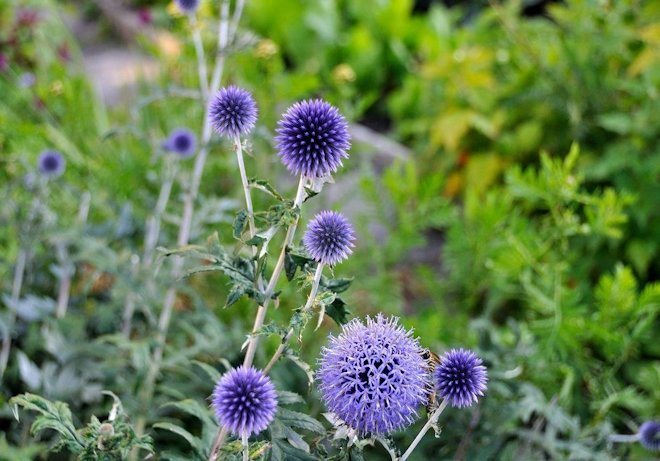

Pests and diseases
Mordovnik is very rarely affected by infections. If he gets sick, it is usually due to waterlogging of the soil, which his root system cannot tolerate. It is impossible to save plants affected by root rot. They must be removed, and then the soil must be treated with any fungicidal agents. From diseases of the aerial part, a brown spot was noticed. In this case, it is also better to destroy the affected bushes.
Insect pests usually do not affect this herbaceous crop, with the exception of epidemic cases of aphid infestation, locust, etc.


Wintering
Adults of the muzzle do not require preparation for optimal wintering. Shrubs easily tolerate winters and low temperatures without additional shelter. Preparation for the winter of a scabbard consists only in pruning the dried stem, formed after the formation and ripening of the fruit.
Young Tatar individuals do not tolerate frosts well. Therefore, in the fall, additional shelter is created for them. To do this, a layer of spruce branches or dry foliage is applied over the ground. In the spring, after the snow melts, the layer is removed.
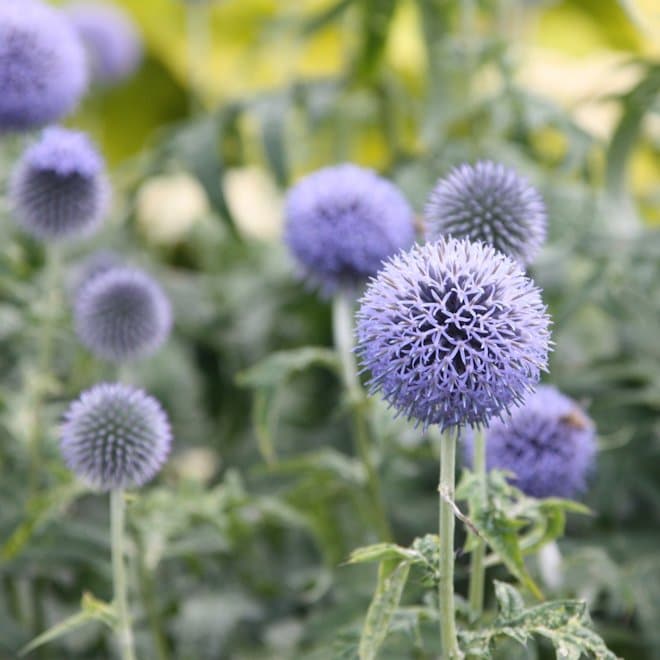

Site selection and soil preparation
The plant loves the sun and dry loose soils. Mordovnik can be safely placed in areas open to winds and the scorching sun. In lowlands, where the land is oversaturated with moisture, and in areas with acidic soil, it will not grow.
The culture does not impose special requirements on the composition of the soil, except that it must be well drained and have a neutral reaction. It responds positively to the introduction of lime, dolomite flour, wood ash into the soil. On sandy scanty soils, the introduction of humus is required to increase fertility.
Appearance
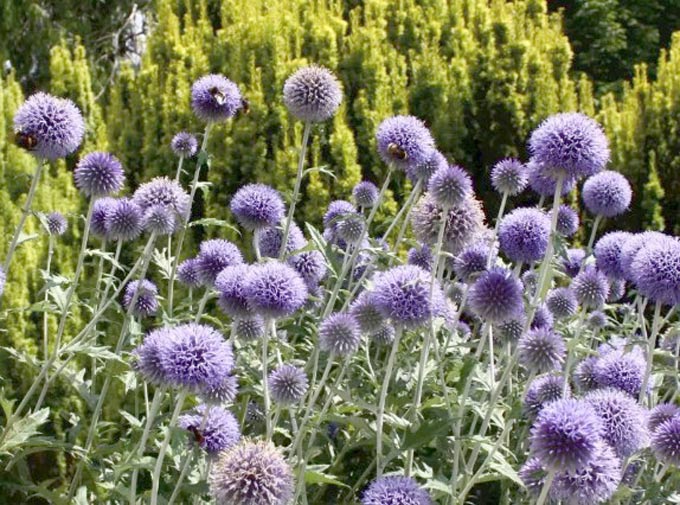

Mordovnik is a ball-headed melliferous plant with a strongly branched stem. Each branch is ribbed, covered with brown fluffy hairs.
The grass can grow up to one and a half meters in height. Its tubular bluish flowers are collected in spherical, rather large, baskets of inflorescences.Separate thorny leaves are elongated, with a pronounced feathery shape.
An ordinary mordovnik is a plant that has a similar structure, but its stem branches weakly, and its height reaches only 30-80 centimeters.
Growing and planting
Reproduction of the muzzle is carried out by the seed method. The collected seeds are dried and stored in a dry, warm place. They remain viable for 3 years. Planting is carried out immediately in open ground. It is best to do this in the fall, but spring sowing is also allowed. Spring seedlings develop somewhat more slowly. It is recommended to carry out cold stratification for a week before sowing in autumn. This procedure will prepare the seeds for the upcoming frost.
In September-October, the seeds are mixed with sawdust and evenly distributed into the grooves to a depth of 1.5-3 cm. The distance between the grooves should be 60 cm. Then the soil should be leveled with a rake. Additional cover is not needed. It is good if the whole field is covered with snow in winter, then the shoots will begin to develop earlier, and friendly shoots will appear in early spring.
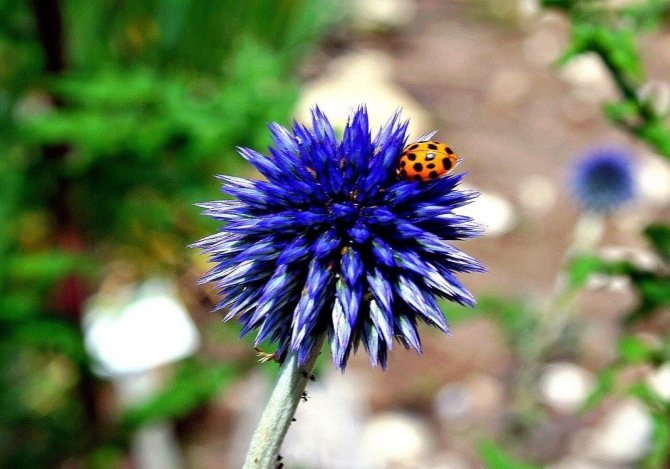

In the northern regions, you can pre-grow seedlings. This is advisable if you need to sow a small area. Seedlings begin to grow in early March. The seeds are sown in containers with sandy-peat soil and carefully moistened. Seedlings appear in 7-10 days. To prevent the seedlings from freezing, they are planted in open ground only in mid-May.
Mordovnik prefers loose fertile soils with a neutral or slightly acidic reaction. It develops poorly on heavy clay soils. Also, the plant has a negative attitude towards the proximity of groundwater and reservoirs. In the first year, the grass grows root mass and forms a lush rosette of basal leaves. From the second year, a long stem begins to develop, which is covered with beautiful inflorescences. Every year the size of the bush becomes larger and the flowering is more abundant.


Traditional medicine recipes
In folk medicine, decoctions and infusions are used based on the muzzle. Medicinal raw materials are manufactured according to various recipes, based on the clinical situation and the patient's diagnosis. For the preparation of mixtures, the dried fruit of the muzzle is used, which is harvested in early autumn, after the seed boxes have ripened. The shelf life of prepared seeds is 2 years.
Fortifying infusion
To prepare a tonic and restorative infusion, 3 teaspoons of muzzle seeds are poured with a glass of clean hot water. After that, the glass is covered with a lid and left in a cool dark place for half a day. Before use, filter the glass with the infusion through several layers of gauze so that the seeds remain on the fabric. Take an infusion of 50 ml 4 times a day.
Impotence treatment
For the treatment of impotence, an aqueous infusion of mordovna is made, the composition of which is almost identical to the previous one. 4 teaspoons of plant seeds are poured with one and a half cups of boiling water and the mixture is allowed to brew for 12 hours. After that, they consume a high-quality strained drink in a quarter of a glass 3 times a day.
It is important to strain the infusion with high quality, since the seeds that enter the body can cause toxic effects and lead to poisoning.


Psoriasis treatment
As a therapeutic drug for the relief of psoriasis, an alcoholic tincture from Tartar seeds is used. The recipe is made in the following way: 2 tablespoons of the plant are poured with half a liter of vodka or alcohol. Then the resulting mixture is shaken well and removed to a cool, dark place for two weeks, occasionally shaking the composition. The resulting tincture is applied externally, lubricating the damaged areas of the body 2-3 times a day. It is also possible to use compresses that can withstand no more than 2 hours. The first positive results appear after half a month of psoriasis treatment, and a qualitative improvement is observed after 3 months of regular rubbing with tincture.
Treatment of blood pressure and autonomic disorders
For the production of raw materials, the seeds are passed through a blender to obtain a sandy mixture. Three teaspoons of the resulting mixture are poured into 200 ml of boiling water and left unopened for 3 hours. After that, the infusion is filtered through a dense cloth or gauze. Consume a third of a glass orally 4 times a day. The course of admission does not exceed 10 days.
Dystrophy treatment
For the treatment of dystrophic disorders, half a glass of alcohol is mixed with a teaspoon of plant seeds. The resulting mixture is poured into a sealed container and infused for half a month. It is taken orally 10 drops before meals. A positive result appears after 7-10 days of admission, the course of admission is 30 days. After a month of prima, you should take the same break and repeat the second course.
Treatment of disorders of the central nervous system - central nervous system
A decoction is made from a mordovnik. To do this, a teaspoon of tartar seeds is poured with a glass of boiling water and cooked over low heat for a quarter of an hour. The resulting broth is cooled and allowed to brew for two hours. The finished mixture is taken orally in a tablespoon 4 times a day.
Also, for pathologies of the central nervous system, an infusion of a scabbard is used, which is made from 3 small spoons of a plant and a glass of boiling water. The resulting mixture is infused in a dark room for half a day, filtered, and then taken before meals in a quarter of a glass 3 times a day.
For urinary incontinence
Crushed tartar seeds are poured into glasses of boiling water at a dosage of 3 teaspoons. The container is closed with a tight lid and left in a dark place for 2-3 hours. After that, the resulting infusion is filtered and taken orally in 1/3 cup. A positive result is noticeable after 14 days of admission.
Radiculitis treatment
The treatment of sciatica requires the preparation of an alcoholic tincture of a scabbard Tartar seeds and pure medical alcohol are used as medicinal raw materials. To prepare an alcoholic tincture, a small spoonful of seeds is poured with half a glass of alcohol and stored in a dark room for 4 weeks. Shake the tincture periodically. After preparation, the mixture is well filtered. The drug is used for rubbing sore spots 10 times a day.
Chronic otitis media treatment
For the treatment of hearing diseases, the following mixture is prepared - 2 teaspoons of crushed seeds are poured with 10 teaspoons of sunflower oil. The resulting mixture is boiled in a water bath for 2 hours, then cooled and filtered. The resulting infusion is dripped into the ears, three drops in each ear 3 times a day. The mixture is left in the ear in the form of a turunda overnight. It is applied within a month.
For ear diseases caused by damage to the nervous system, a mixture obtained from the following herbs is prepared - equal parts of the herb of oregano, seeds of mordovia, leuzea, drop caps and rose hips are mixed. A tablespoon of the resulting mixture is poured with one and a half glasses of cold water and left to infuse for 3 hours. Then the mixture is boiled for 5 minutes. The resulting broth is infused for an hour and filtered until a homogeneous mass is obtained. Drink a quarter cup three times a day for a month
Treatment of facial nerve neuritis
To prepare a mixture for lotions, mix equal parts of lemon balm, peppermint and oregano, add half of the seeds of the muzzle. the resulting mixture is poured with a glass of boiling water and insisted for an hour. Lotions are applied to the damaged area 2 times a day. To do this, the mixture is rubbed into the skin, then covered with a bandage or cotton wool for half an hour. The course of treatment is a week.
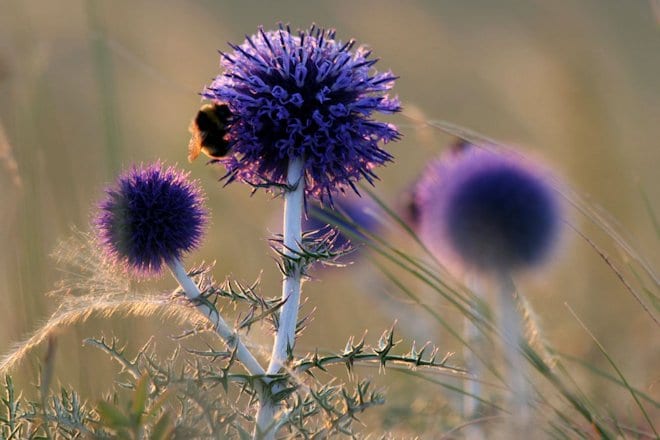

Agrotechnics
To obtain this melliferous herb, beekeepers plant it in uncultivated areas near apiaries. These can be suitable places on slopes, forest clearings, among bushes and in other unnecessary areas.
The plant is unpretentious - no special efforts are required for growing. Almost all types of soils are suitable for the honey plant. The only thing that it does not tolerate is the excessive humidity of the site. In this case, there is a threat of root decay.
For better development, the grass is sown in chernozem and clay fertilized soils. Empty fields or plots where corn, wheat or potatoes were previously grown are selected.
Read also: DIY bee feeder
Mordovnik ball-headed honey plant agricultural technology:
- To obtain a high-quality seed fund in August and September, it is necessary to collect the formed baskets of grass. This must be done carefully, since the inflorescences quickly crumble after separation from the stems!
- The culture is sown in spring in well-warmed soil. Recommended temperature indicators are from +10 to +12 degrees.
- Before sowing, the land is dug up or plowed with a tractor.
- If the planting area is small, nests are made manually at a distance of 15-25 centimeters. The seeds themselves are mixed with fine sawdust for fertilization.
- For mass planting using a cultivator or a manual seeder, the grass is sown in two rows, leaving a row spacing of 30-75 centimeters between them.
But it should be borne in mind that this method is less effective, since the seeds are covered with hairs - during mechanical sowing, they cling to each other and grow heap. It is recommended to sow this plant by hand!
For the better development of the honey plant, superphosphates are introduced into the soil at the rate of 50 kilograms per hectare.
Opponents of chemical fertilizers are advised to plant the muzzle in a mixture with phacelia seeds (ratio 8 to 5). Phacelia grows quickly and is also a good modiferous plant, but most importantly, it enriches the earth with nitrogen, which is necessary for the development of other crops.
Care features
Rows are thinned out after the first shoots appear, at the same time weeding out the weeds. In all subsequent years after harvest, the stem itself is cut by five centimeters, and then the aisles are loosened.
There is a little trick for the beekeepers. If the second year plantings are mown in the spring, the flowering period will move to the end of August and throughout September. At this time, the bee colonies are just gaining strength before wintering.
Popular species and varieties
The genus includes over 190 species. Many of them are grown in parks and gardens as ornamental plants. Some species are used as honey plants and are cultivated in beekeeping farms. The following types of mordovna can be used in landscape design:
- ordinary (Echinops ritro);
- squat or low;
- Russian (Echinops ruthenicus);
- ball-headed (Echinops sphaerocephalus);
- broadleaf (Echinops latifolius).
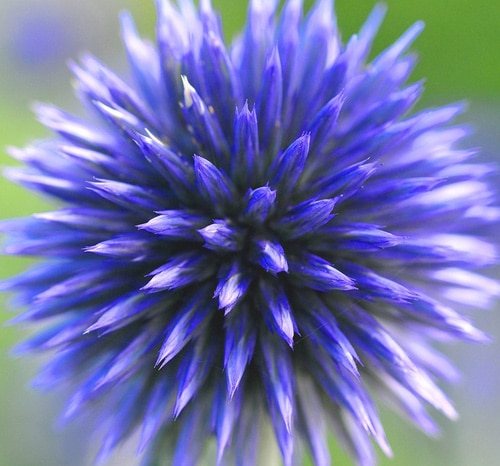

Mordovnik, variety "Veitch Blue" (Veitch's Blue)
In flower gardens, varieties of common mordovia are more common: "Waych Blue", "Blue Globe" and "Taplow Blue". These plants are distinguished by bright blue inflorescences, and the most popular variety of the ball-headed mordovan is Arctic Glow.
Description of the herb mordovnik (with photo)
It is a perennial, rarely one or biennial rhizome plant with a height of 30 cm to 2 m with a taproot thick root that goes deep into the soil.
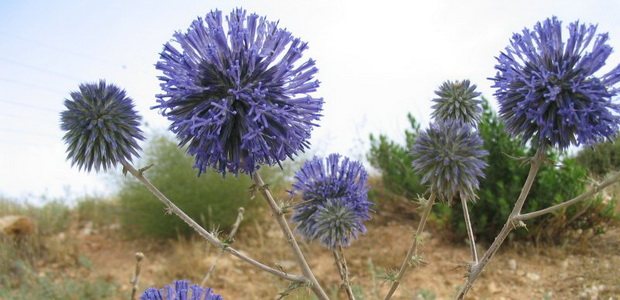

The stem is prickly, straight, dense, hard, branched in the upper part.
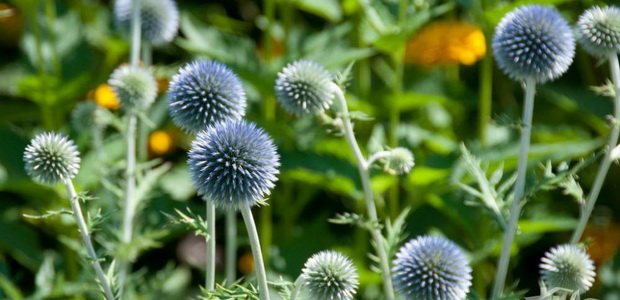

When describing the mordovnik plant, it is worth noting that its leaves are dark green, with a smooth, shiny surface, thorny, pinnately dissected, formed mainly in the lower part of the shoot. The length of the leaf plate reaches 25 cm, the width is 10 cm.
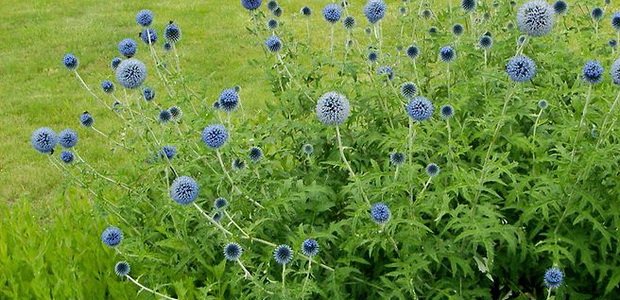

The lower leaves are larger than the upper ones, they are attached to the petioles, the stem leaves are tightly attached to the shoot. The stem and the lower part of the leaves are densely covered with small brown hairs.
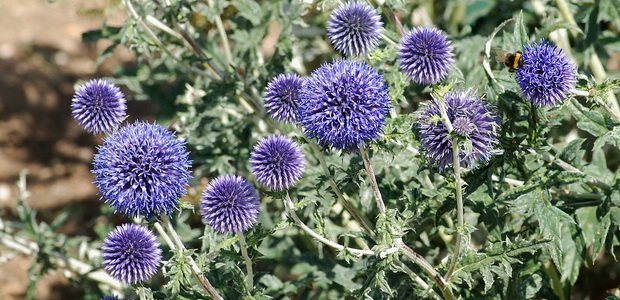

Multi-flowered inflorescences, collected in round or elongated heads of white, blue, yellow or purple color, 5-8 cm in diameter, have a strong mint aroma. Each inflorescence has about 200 - 400 buds.About 30 inflorescences can form on one plant. Blooms in June - September, depending on the species, for 30 - 40 days. Flowering can be observed in the second year after planting.
The fruit is a small oval achene 0.6 cm long with a glandular membrane and a tuft. Fruiting lasts from July to August. Ripe fruits are harvested in late September - early October.
How the Mordovna flower is used
Despite the fact that the mordovnik does not belong to bright, spectacular garden perennials, it is able to give the flower garden its zest, decorate any part of the garden, add blue-blue colors to the flower garden.
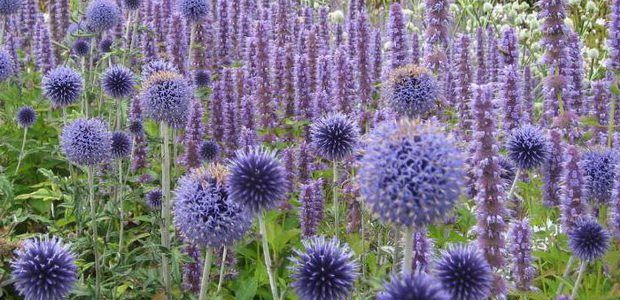

This crop is suitable for group and single plantings in the background in mixborders and ridges. Place a tall flower with large leaves in the center of the flower bed or in the background. This flower looks harmoniously with chamomiles, flax, phlox, asters, basil, catnip, monarda, poppy and other ornamental plants. This culture is also suitable for decorating rocky gardens, rockeries.
The mordovnik is also effective in the cut. It is used for making bouquets and dry compositions. It keeps its shape and brightness for a long time.
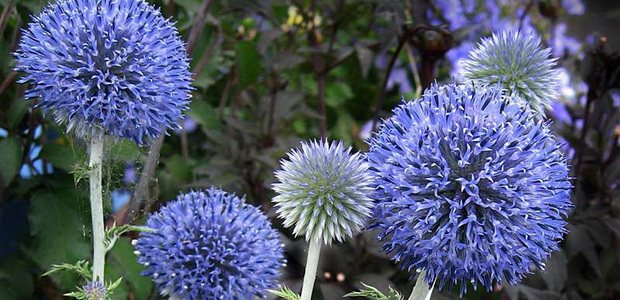

This plant is recognized as one of the best honey plants. All parts of the scabbard are used for medicinal purposes. Decoctions from dried raw materials are taken for headaches, hypotonic manifestations, epileptic seizures and other diseases.
The oil obtained from the fruit of the muzzle eliminates inflammation, stops bleeding, and accelerates wound healing.
More interesting and useful information about the features of breeding in the garden plot of the mordovnik is set out in the video, which can be viewed below on this page:
A variety of plants are used to design a truly beautiful flower bed. One of the brightest representatives of flowers that can add zest to the construction of landscape design is the mordovnik. We will tell you about the agrotechnics of the mordovnik and the principles of its cultivation on a personal plot further, in an article prepared by the editors of the site.
